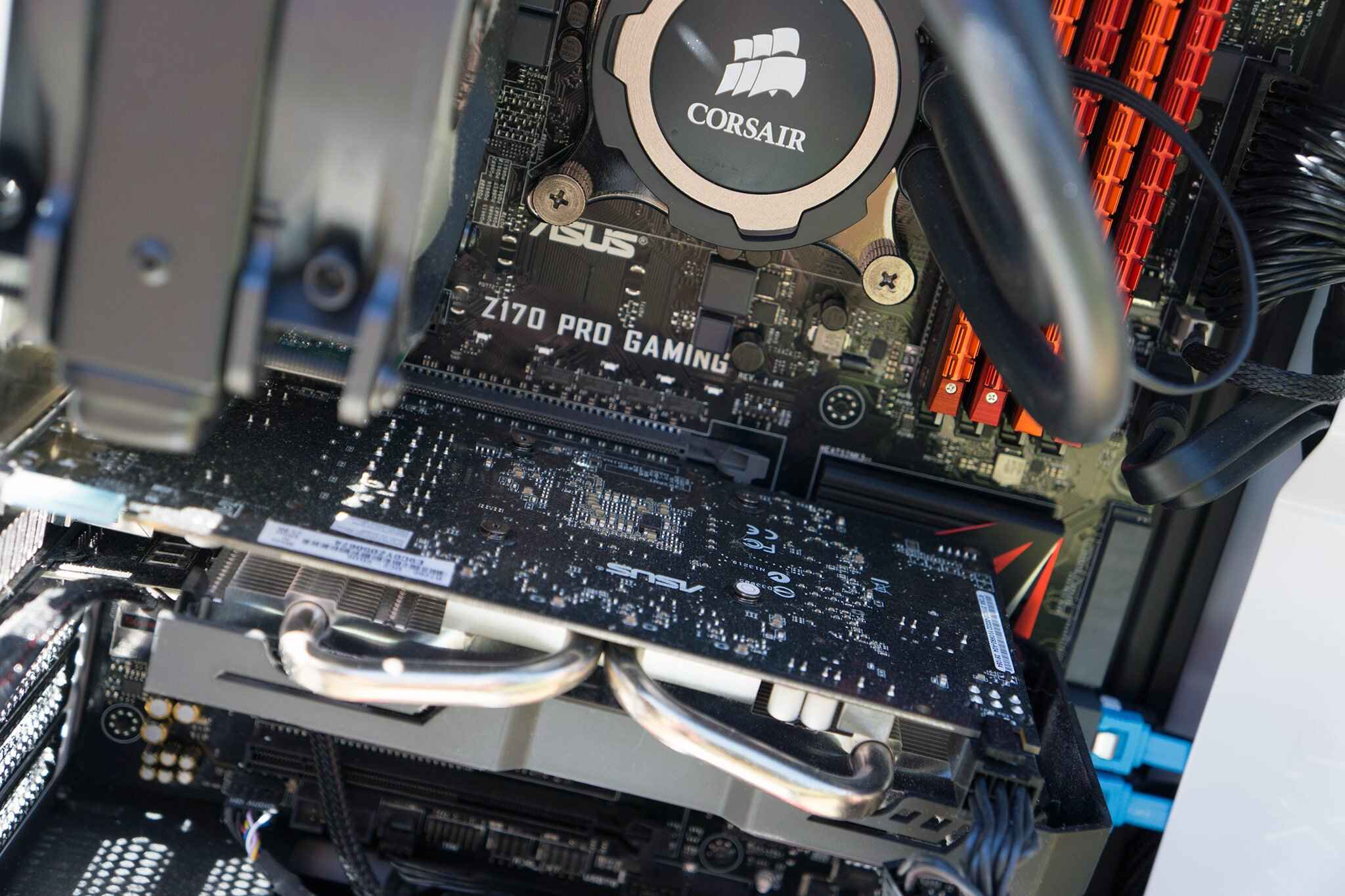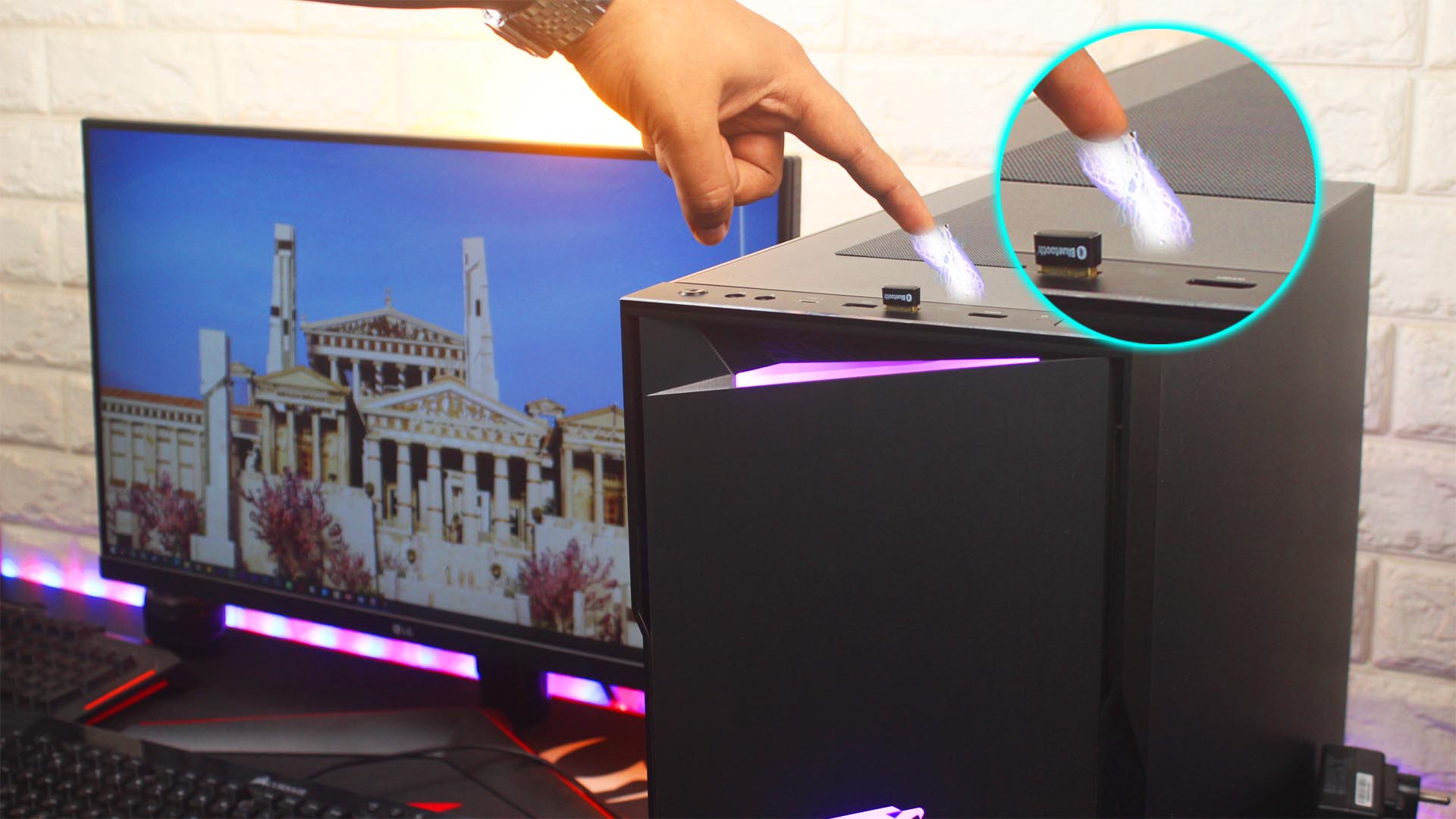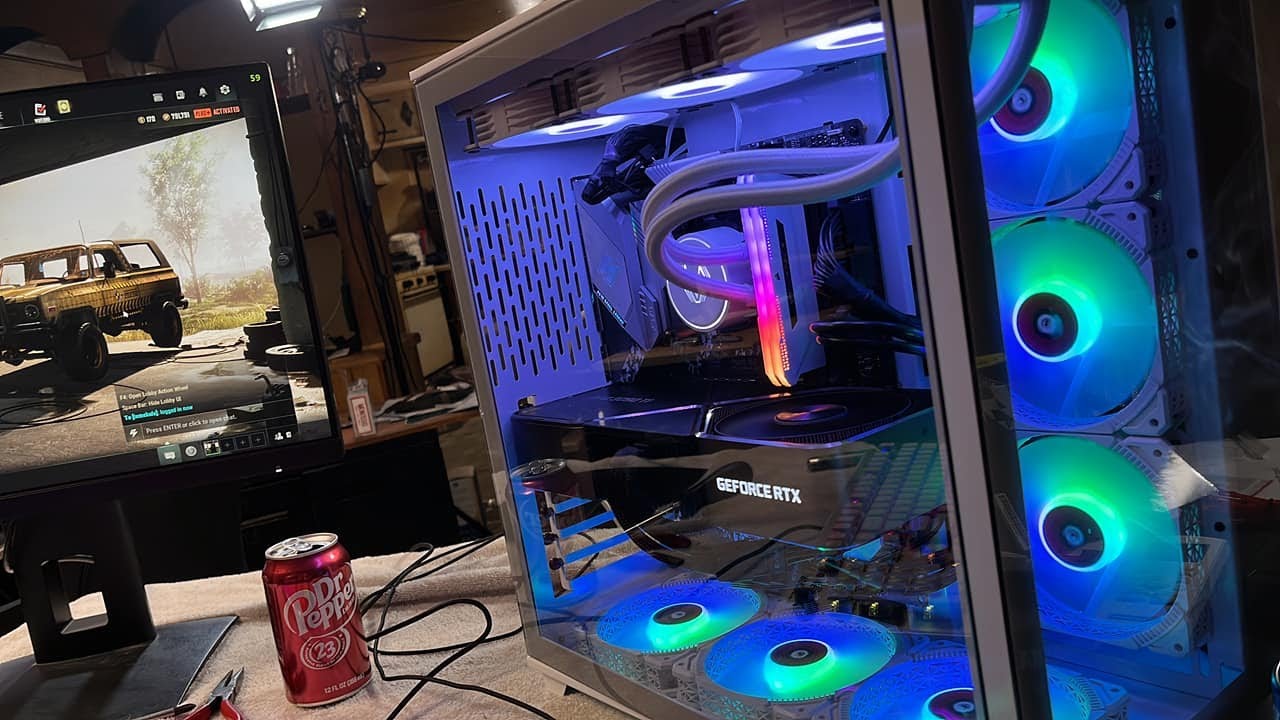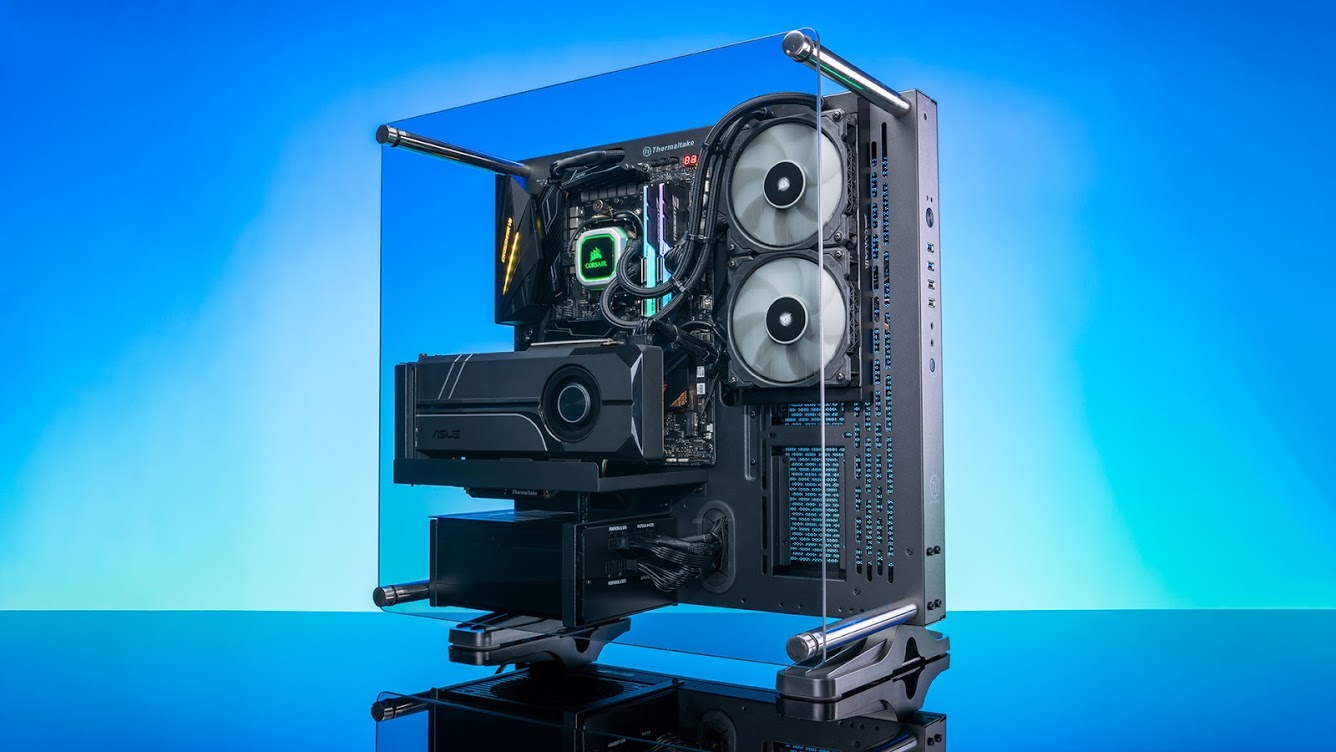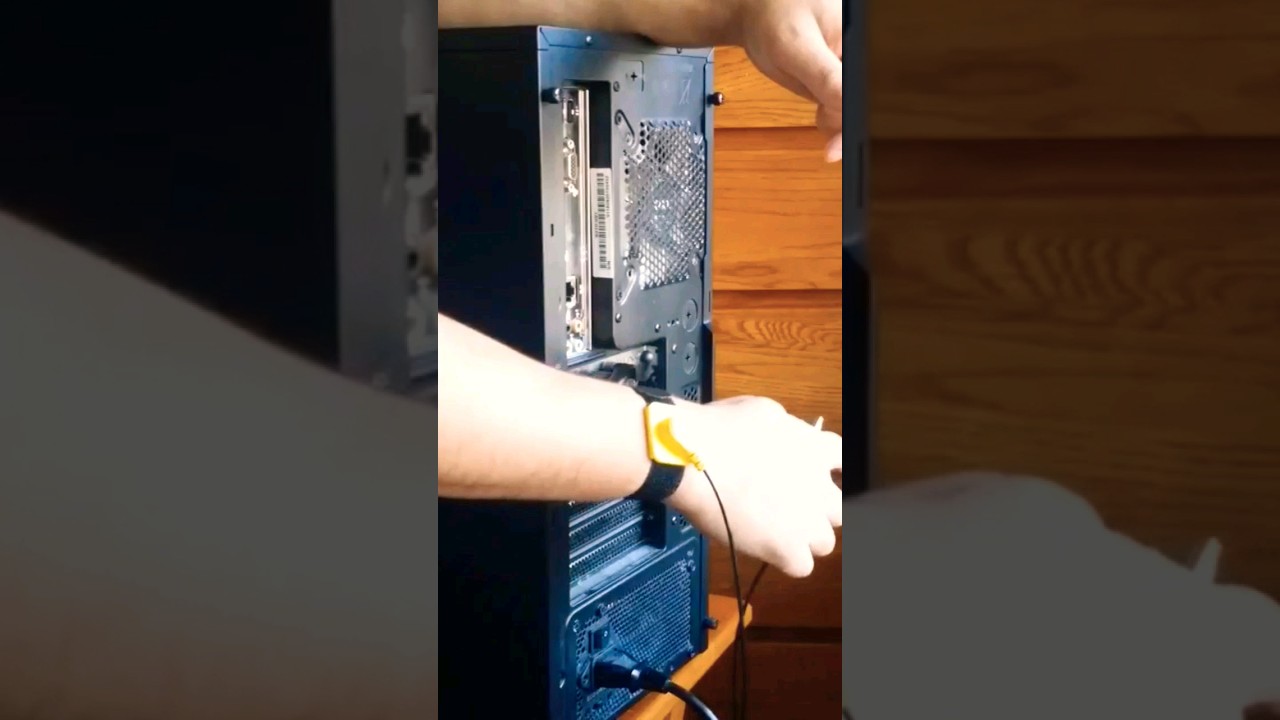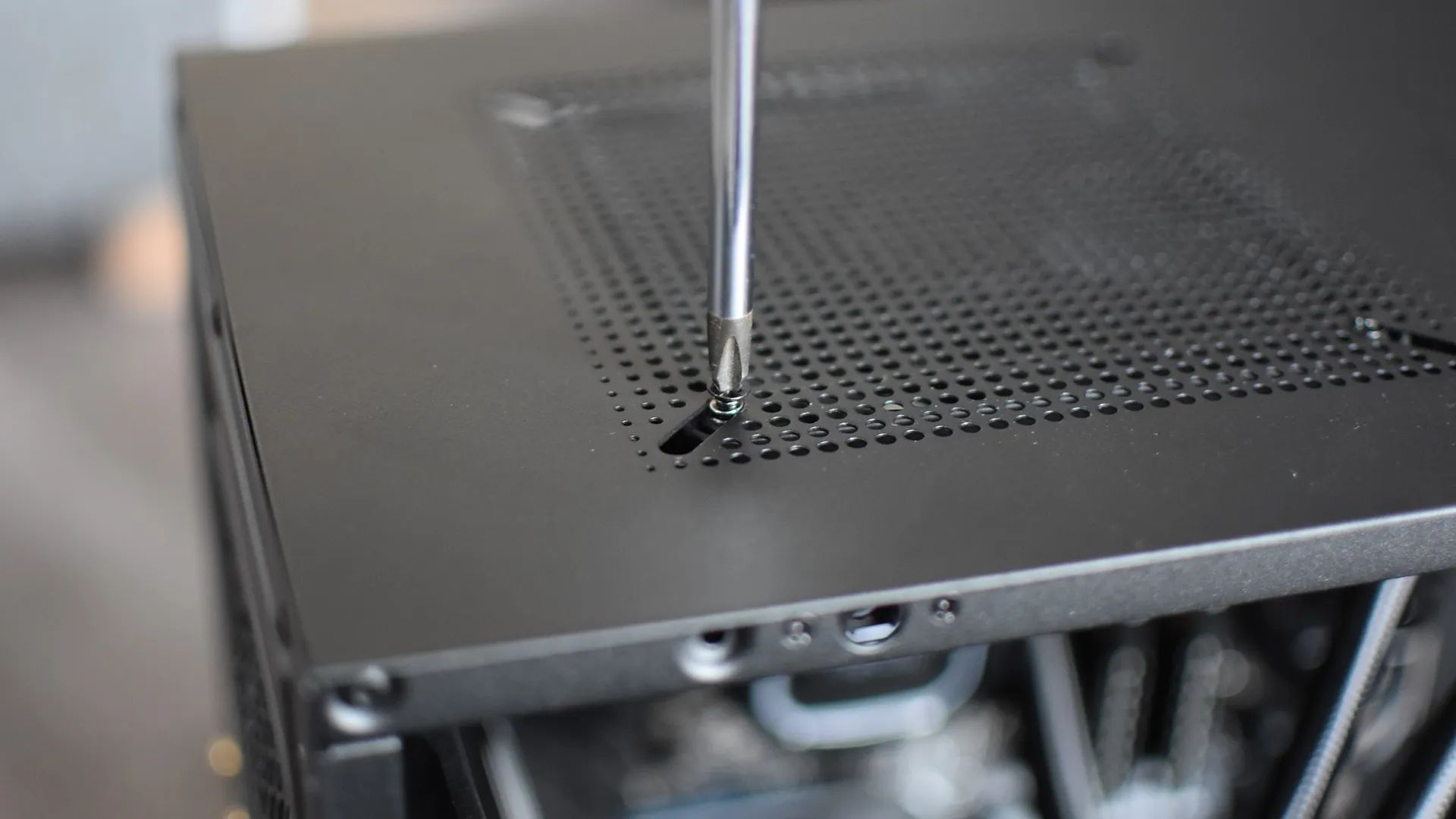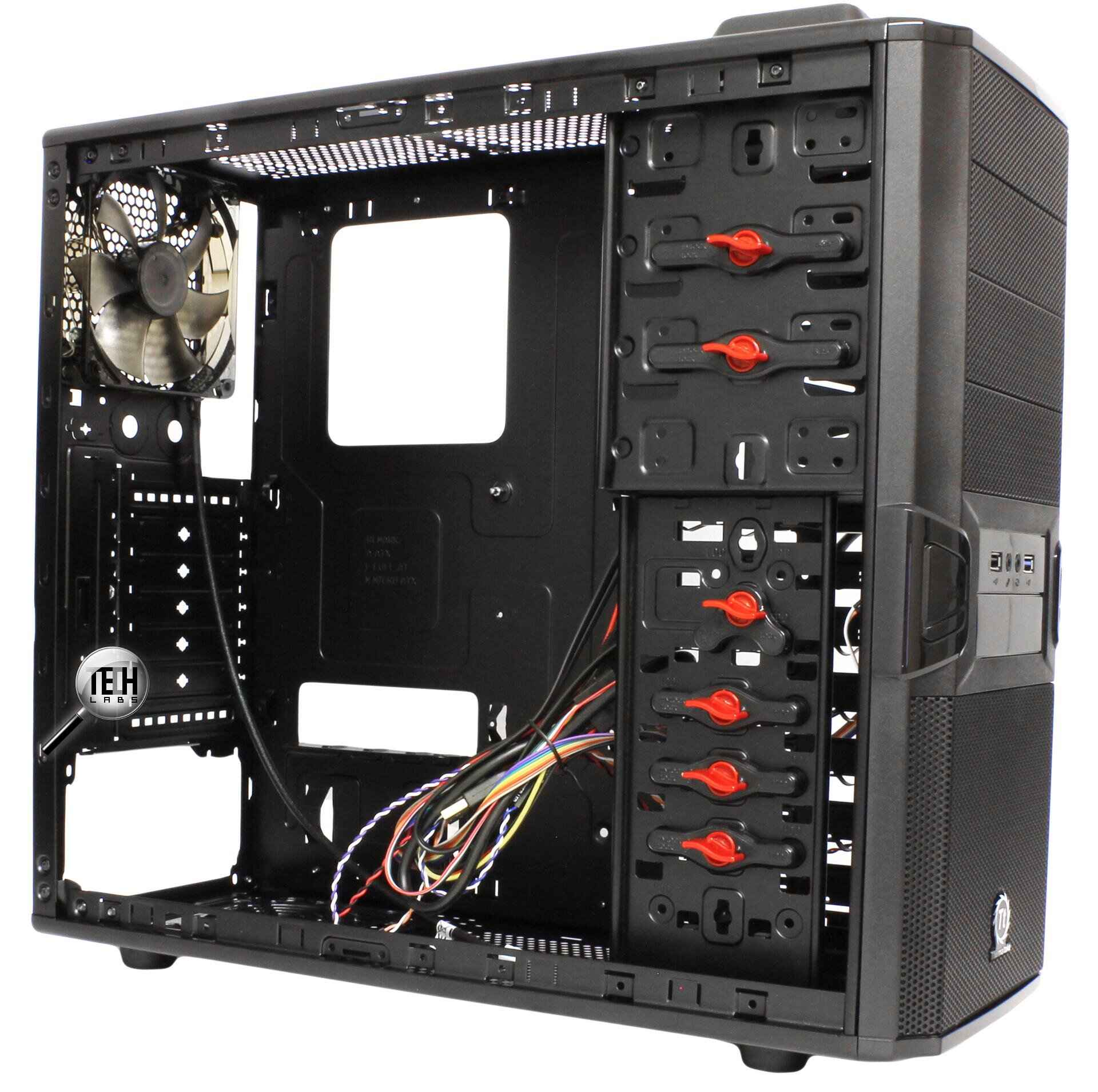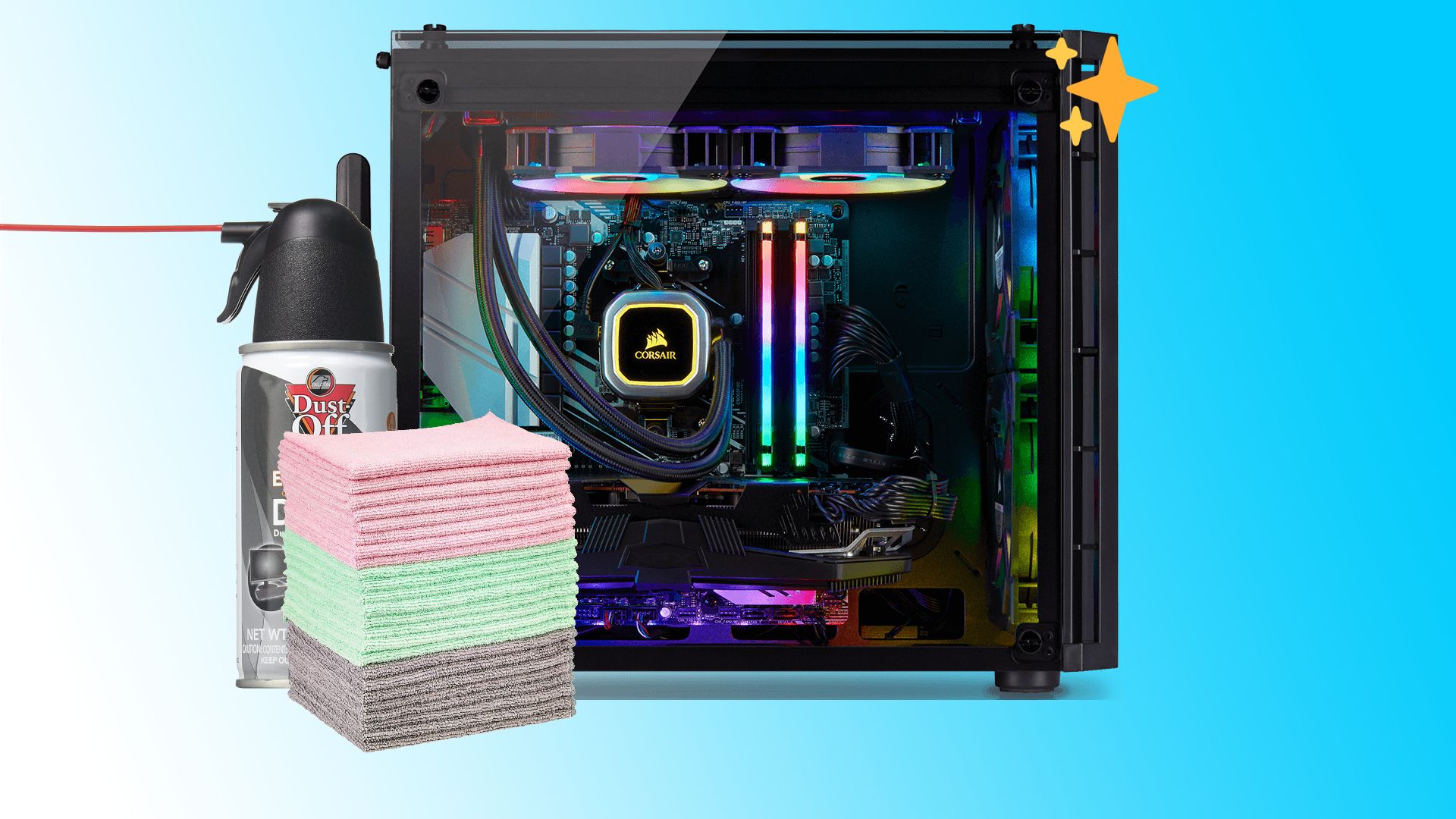Introduction
When it comes to working with computers, it’s essential to be aware of static electricity and its potential impact on PC cases. Static electricity is a common occurrence in our daily lives, but its presence can pose a significant risk to sensitive electronic components, such as those found in computers.
So, what exactly is static electricity? Simply put, it is a buildup of electric charge on the surface of an object. This charge is generated when two materials come into contact or separate, leading to the transfer of electrons. The imbalance of charges, positive or negative, creates an electric field that can discharge when the conditions are right.
When it comes to PC cases, static electricity can be particularly problematic. These cases house crucial components like the motherboard, graphics card, and hard drive, all of which are highly sensitive to electric discharges. A sudden surge of static electricity can potentially damage or even completely destroy these delicate internal parts of a computer.
Given the potential risks associated with static electricity and PC cases, it is crucial to practice caution and take preventative measures to mitigate the chances of any damage occurring. In this article, we will discuss the importance of being mindful of static electricity when touching PC cases and explore effective methods for preventing static discharge.
What is static electricity?
Static electricity is a natural phenomenon that occurs when there is an imbalance of electric charges on the surface of an object. It is called “static” because the electric charges remain stationary rather than flowing like current in a circuit. This occurs when two objects come into contact or separate, causing a transfer of electrons between the surfaces.
The transfer of electrons leads to the build-up of positive or negative charges on the objects involved. Positive charges result from the loss of electrons, while negative charges result from the gain of electrons. The charges on each object create an electric field around them. When there is a significant imbalance of charges, this electric field can discharge, causing a sudden flow of current between the two objects.
Static electricity is most commonly experienced in everyday scenarios, such as when we walk across a carpet and touch a metal doorknob, resulting in a sudden shock. It can also occur when we rub certain materials together, like a comb through our hair, generating enough static charge to make our hair stand on end.
While static electricity is generally harmless to humans, it can be detrimental to electronic devices, including PC cases. The discharge of static electricity can cause damage to the sensitive components inside the case, leading to malfunctions or total failure of the computer.
Understanding the nature of static electricity and its impact on PC cases is crucial for anyone working with computers. By being aware of its potential dangers, we can take the necessary precautions to protect our devices and ensure their longevity.
How does static electricity affect PC cases?
Static electricity can have a detrimental impact on PC cases and the delicate components housed inside them. When static charge builds up on the surface of a person or an object, it seeks a path of least resistance to discharge. If a person with a high charge level touches a PC case, the static electricity can transfer from their body to the case, potentially causing damage to the internal components.
PC components, such as the motherboard, graphics card, and hard drive, are highly susceptible to damage from static electricity. These sensitive electronic parts are designed to function within specific voltage tolerances, and even small static discharges can exceed those limits, leading to component failure.
Static electricity can cause several types of damage to PC cases and their internal components:
- Electrical damage: A discharge of static electricity can create a high voltage surge that surpasses the components’ maximum voltage rating. This can result in irreparable damage to critical circuits, rendering them useless or causing intermittent failures.
- Electronic component malfunction: Static discharge can disrupt the normal functioning of electronic components. It can cause data corruption, memory errors, or even fry the delicate microcircuits, leading to system crashes or complete hardware failure.
- Heat damage: Static electricity can generate heat when it discharges in close proximity to delicate components. The high temperatures resulting from the discharge can cause overheating, which can degrade the performance and lifespan of the affected components.
- Permanent damage: In some cases, static electricity can cause irreversible damage. Component failure may require costly repairs or replacement, leading to unnecessary expenses and potential data loss.
Given the potential risks associated with static electricity, it is essential to handle PC cases with care to minimize the chances of static discharge. By understanding the impact of static electricity on PC cases, we can take appropriate measures to protect our valuable computers.
Why is it important to be mindful of static electricity when touching PC cases?
Being mindful of static electricity when touching PC cases is crucial to ensure the proper functioning and longevity of the computer’s internal components. Here are several reasons why it is important to take precautions:
- Preventing component damage: The delicate electronic components inside a PC case, including the motherboard, graphics card, and hard drive, can be easily damaged by static electricity. By being mindful of static discharge, we can avoid costly component failures and ensure that our computers continue to operate smoothly.
- Avoiding system crashes and data loss: When static electricity affects the internal components of a computer, it can lead to system crashes and data loss. This can be especially problematic if the computer is used for critical tasks or contains valuable data. By taking precautions to prevent static discharge, we can minimize the risk of system failures and data loss.
- Protecting personal investments: Computers are significant investments for many individuals and businesses. By being mindful of static electricity, we can protect our investment by extending the lifespan of the components and reducing the need for costly repairs or replacements.
- Ensuring long-term performance: Static discharge can degrade the performance of PC components over time. By minimizing the impact of static electricity, we can ensure that our computers continue to perform optimally, providing us with efficient and reliable operation.
- Maintaining warranty coverage: Some computer warranties may become void if damage is caused by static electricity. By practicing static electricity safety measures, we can ensure that our warranties remain valid and provide us with the necessary coverage in case of any unforeseen issues.
Overall, being mindful of static electricity when touching PC cases is essential for protecting our investments, maintaining system performance, and preventing potential damage to delicate components. By taking simple precautions, we can ensure the smooth operation of our computers and avoid unnecessary expenses or data loss.
Preventing static electricity when touching PC cases
To prevent static electricity from causing damage to PC cases and their internal components, there are several effective measures that can be taken. By following these precautions, we can minimize the risk of static discharge and ensure the safe handling of our computers:
- Avoid wearing clothing that generates static: Certain fabrics, such as wool or nylon, can contribute to the build-up of static charge. When working with PC cases, it is advisable to wear clothing made from natural materials like cotton, as they are less likely to generate static electricity.
- Ensure proper grounding: Grounding oneself is an essential step in preventing static discharge. Before touching a PC case, it is recommended to ground yourself by touching a grounded metal object or using an appropriate grounding strap. This allows any static charge to dissipate harmlessly.
- Avoid working in dry environments: Dry environments are more conducive to the build-up of static electricity. To minimize the risk of static discharge, it is advisable to work in an environment with moderate humidity. Using a humidifier can help maintain an optimal humidity level in the workspace.
- Keep the PC case plugged in but turned off: When working with a PC case, it is recommended to keep it plugged into a grounded power outlet but ensure that the computer is turned off. This way, the case remains grounded, reducing the chances of static electricity build-up.
- Use an anti-static wrist strap: An anti-static wrist strap is a simple but effective tool for preventing static discharge. This strap is worn around the wrist and connects to a grounded surface, ensuring that any built-up static charge is transferred safely away from the PC case and its components.
- Defend against static electricity with an anti-static mat: An anti-static mat is another valuable tool for preventing static discharge. Placing the PC case on an anti-static mat when working with it provides an additional layer of protection, as the mat dissipates any static charge and prevents it from affecting the components.
By implementing these preventative measures, we can significantly reduce the risk of static electricity causing damage to PC cases and their internal components. These precautions, when combined with proper handling techniques, create a safer environment for working with computers and ensure the longevity and optimal performance of our devices.
Using an anti-static wrist strap
An anti-static wrist strap is a valuable tool for preventing static discharge when working with PC cases. It is a simple and affordable device that can provide added protection for both the user and the computer components. Here’s how to effectively use an anti-static wrist strap:
- Prepare the workstation: Ensure that the work area is clean and free from any potential sources of static electricity. Remove any objects that may generate static, such as plastic bags or synthetic materials.
- Attach the grounding wire: One end of the anti-static wrist strap contains a metallic plate or clip, which needs to be connected to a grounded surface. This can be done by attaching it to a metal part of the computer case or a grounded metal object nearby.
- Secure the anti-static wrist strap: Wrap the wrist strap securely around your wrist, making sure that it is snug but not too tight. The metal plate or clip should be in direct contact with your skin to allow for effective grounding.
- Connect the strap to the PC case: The other end of the anti-static wrist strap has a conductive cord with an alligator clip. Attach this clip to a metal part of the PC case, ensuring a solid connection. The clip should be attached to an unpainted metal surface for optimal conductivity.
- Work with the PC case: Once the anti-static wrist strap is properly connected, you can safely handle the PC case without worrying about static discharge. The strap will continuously dissipate any built-up static charge from your body, keeping the sensitive components of the computer protected.
- Keep the strap connected: It is crucial to keep the anti-static wrist strap connected throughout the entire process of working with the PC case. Make sure the grounding wire remains securely attached to a grounded surface, and the clip remains firmly connected to the PC case. This will ensure a consistent path for static discharge.
Using an anti-static wrist strap is a simple yet effective way to prevent static discharge while working with PC cases. By providing a continuous grounding connection, the strap protects both the user and the computer components from potential damage. It is an essential tool for anyone working with electronics. Remember to follow the instructions carefully and make it a habit to use the anti-static wrist strap whenever handling computer components to ensure a safe and static-free environment.
Defending against static electricity with an anti-static mat
An anti-static mat is a valuable tool for protecting against static electricity when working with PC cases. It provides an additional layer of defense by dissipating static charge and preventing it from accumulating on the surface of the mat and the computer components. Here’s how to effectively use an anti-static mat:
- Prepare the work area: Clear the work area of any potentially static-generating objects, such as plastic bags or synthetic materials. Make sure that the surface where you’ll be placing the PC case is clean and free from dust or debris.
- Place the anti-static mat: Lay the anti-static mat on the work surface, ensuring that it covers the area where you’ll be working with the PC case. The mat should be large enough to accommodate the PC case and provide ample space for maneuvering while connecting or disconnecting components.
- Position the PC case: Once the anti-static mat is in place, carefully place the PC case on the mat. Ensure that the case itself is in direct contact with the mat’s surface to facilitate the dissipation of any static charge.
- Connect the mat to a grounded source: An anti-static mat typically has a grounding wire incorporated into its design. Extend this wire and attach it to a grounded source, such as a grounded electrical outlet, a grounding rod, or a metal part of the building’s structure. This will provide a continuous discharge path for any static charge accumulated on the mat.
- Work with the PC case: With the anti-static mat in place and properly connected, you can now work on the PC case without the risk of static discharge. The mat will effectively dissipate any static electricity, minimizing the potential for damage to the sensitive components.
- Keep the anti-static mat clean: Regularly clean the anti-static mat to maintain its effectiveness. Use a damp cloth to wipe away dust or other particles that may accumulate on the mat’s surface. Avoid using harsh chemicals or abrasive cleaning agents that may damage the mat.
An anti-static mat is a reliable defense against static electricity when working with PC cases. It provides a safe working surface and ensures that any static charge is promptly discharged, protecting both the user and the computer components. By following these steps and incorporating an anti-static mat into your work setup, you can significantly reduce the risk of static discharge and maintain a static-free environment for working with PCs.
Additional tips for avoiding static electricity when touching PC cases
In addition to using anti-static wrist straps and mats, there are other practical steps you can take to further minimize the risk of static electricity when handling PC cases. Consider the following tips:
- Avoid working on carpeted surfaces: Carpets are notorious for generating static electricity. Whenever possible, work on a hard, non-carpeted surface, such as a wooden table or an anti-static workbench. If working on a carpeted area is unavoidable, place a grounded mat or an anti-static mat on top of the carpet for an extra layer of protection.
- Limit movement and unnecessary contact: Excessive movement and contact can generate static electricity. Minimize unnecessary movements and avoid touching the PC case or any components more than necessary. When working inside the case, try to keep your movements deliberate and controlled.
- Avoid handling components by their exposed metal contacts: Components like RAM sticks or expansion cards may have exposed metal contacts. Avoid touching these contacts directly, as it increases the risk of static discharge. Instead, handle components by their edges or use anti-static bags or foam to hold and store them when not in use.
- Use an ESD-safe workstation: Electrostatic discharge (ESD)-safe workstations are designed to minimize static electricity. These workstations often feature conducting surfaces and grounding straps or cords that provide continuous grounding. Investing in such a workstation can provide an added layer of protection against static discharge.
- Regularly ground yourself: To maintain a consistent level of grounding, periodically touch a grounded object or reattach your anti-static wrist strap to a grounded source. This helps discharge any accumulated static charge and ensures ongoing protection while working with the PC case.
- Store and transport components properly: When not in use, store PC components in anti-static bags or cases designed for electronics. These bags and cases are made from materials that prevent the build-up of static charge. When transporting components, place them in secure and anti-static packaging to minimize the risk of static damage.
By following these additional tips, you can further reduce the chances of static electricity causing damage to PC cases and their components. Prevention is key when it comes to static discharge, so incorporating these practices into your routine will help ensure a safe and reliable working environment while working with computers.
Conclusion
Static electricity poses a significant risk to PC cases and their internal components. However, by being mindful of its potential dangers and taking preventative measures, we can protect our computers from static discharge and ensure their proper functioning.
Throughout this article, we have explored the nature of static electricity and its impact on PC cases. We have discussed the importance of being cautious when touching PC cases to prevent damage to sensitive components.
We have covered various methods for preventing static electricity, such as wearing clothing that doesn’t generate static, grounding ourselves, working in suitable environments, and using tools like anti-static wrist straps and mats. These measures create a safe and static-free environment for working with PC cases.
Additionally, we have provided additional tips, including avoiding carpeted surfaces, limiting unnecessary contact, handling components carefully, using ESD-safe workstations, and properly storing and transporting components.
By incorporating these practices into our routine, we can significantly reduce the risk of static discharge and safeguard our computers from potential damage, system failures, and data loss.
Remember, when working with PC cases, taking precautionary measures is essential to maintain the longevity and optimal performance of our valuable devices. By being mindful of static electricity and implementing the strategies discussed, we can enjoy a safe and reliable computing experience.







